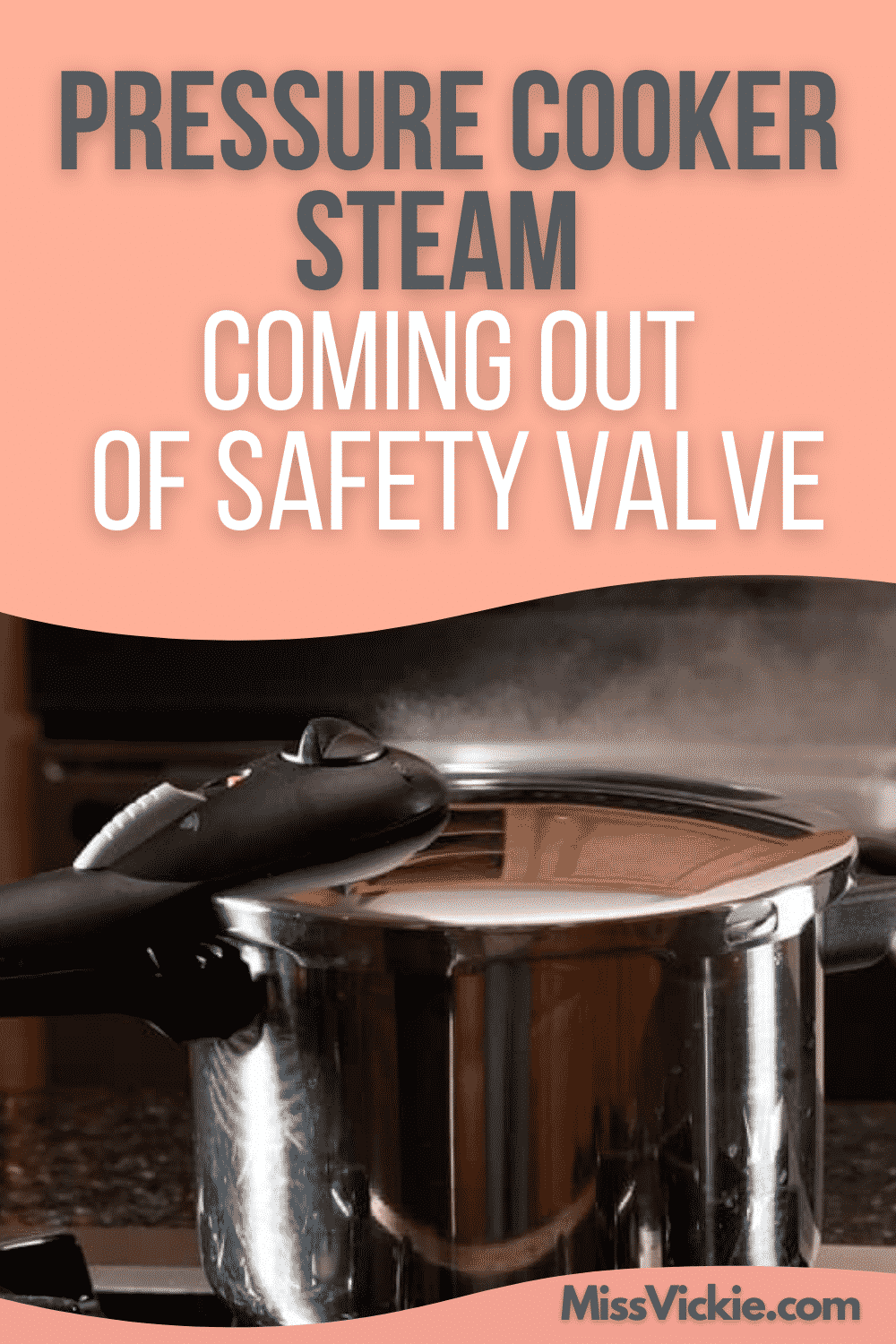
Pressure Cooker Steam Coming Out of Safety Valve
DISCLOSURE: This post may contain affiliate links, meaning when you click the links and make a purchase, I receive a commission. As an Amazon Associate I earn from qualifying purchases.
Seeing steam coming out of your pressure cooker may be scary, and you may be wondering if this is a normal thing. You may have heard stories about pressure cookers exploding and wonder if they are dangerous. We are here to explain how it all works and hopefully set your mind at ease.
Firstly, it is normal for the pressure cooker to release steam out of the safety valve on the lid. However, it is not normal for it to leak steam from anywhere else, such as the edges of the lid.
When does it steam?
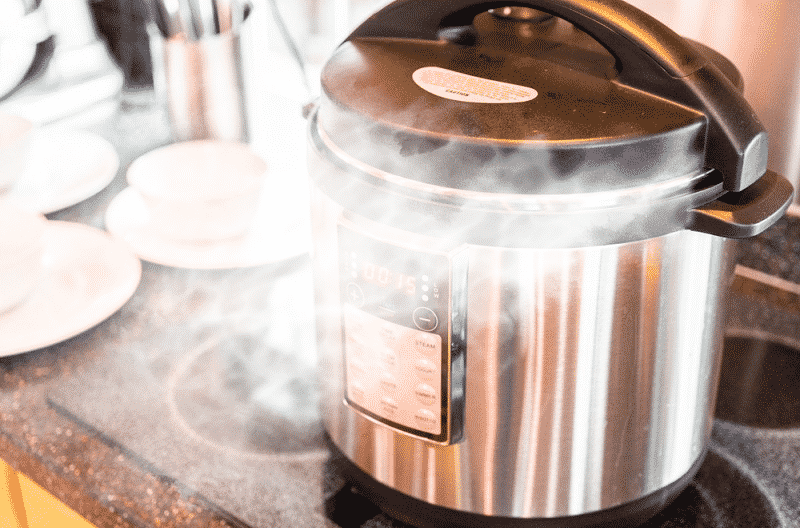
An electric pressure cooker will take around 5-15 minutes to get up to pressure before cooking the food. Factors affecting the pressurization time include how full the pot is and how cold the ingredients are.
Once the pot reaches the required pressure, the float valve will come up, the pressure cooker will beep once, and the cooking time will begin to count down.
At this time, you may notice hissing sounds and some steam coming out of the steam release valve or float valve hole on the lid while the pressure builds – this is entirely normal.
Check your valves
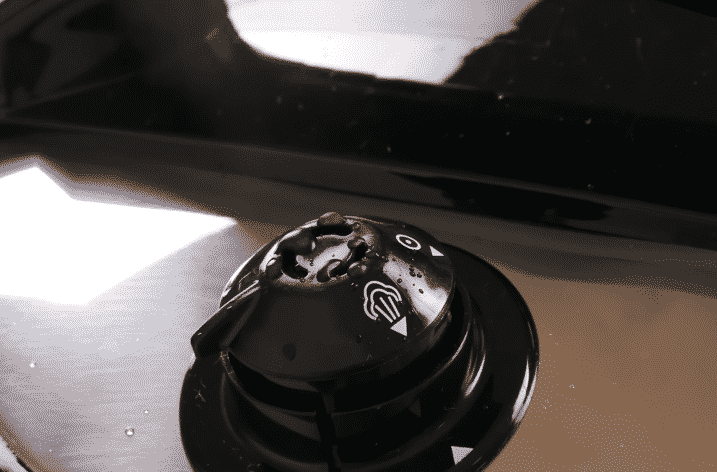
Some Instant Pot models automatically set the pressure valve to “Sealing” when they close, while some need to be set manually. If you forget to set the pressure valve to “Sealing,” you will continue to see steam coming from the pressure valve and possibly from under the edges of the lid as well.
Manual valves must be set to “Sealing” while automatic valves will seal themselves. Check inside your user manual which one you have.
Check your seal
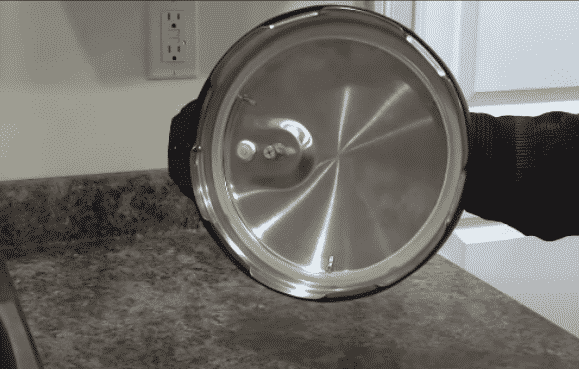
If there is still steam coming out after the pot has come to pressure, or if the pot just won’t come to pressure at all and you’re sure the pressure valve is set to “Sealing,” then this is not normal. It may mean that your seal is either missing or has not been seated correctly around the rim of the lid.
The first thing to do is make sure that the silicone seal inside the edge of the pot is there. It is easy to forget to put it back after washing it. However, putting on a lid without replacing the seal is something that most pressure cooker owners do at some point, so don’t feel foolish!
The second thing to do is check that the sealing ring is evenly seated under the wire around the edge of the lid. An unevenly installed seal can create a partial seal that allows steam to leak out from the edges of the lid. This can happen even when the pot is pressurized and is not supposed to happen.
If you continue to have the same problem even after reseating the ring, then your ring may be damaged, and you probably need a new ring. Alternatively, you may be trying to use an off-brand ring that isn’t right for your pressure cooker.
Generally speaking, if you catch the problem in time, you can continue cooking after you’ve fixed the sealing issue. After replacing or reseating the seal, put the lid back on and resume the cooking cycle where you left off.
[amazon box=”B07CRPSYHL”]
If you didn’t catch this problem early on, you might have lost a lot of the liquid in your pot as the steam escaped. If you’re cooking something with a lot of liquid, such as soup, this probably won’t be a problem, but if you’re cooking a low-liquid meal, you will need to replace that liquid before you resume cooking.
If the liquid looks low, check your pot and add about a cupful of water or stock before resealing the lid.
Why do pressure cookers vent steam?
Keep in mind that the pressure cooker relies on a lot of pressure to cook your food. All pressure cookers are made to vent the excess pressure in steam to prevent too great a build-up. So, venting steam is normal.
As pressure builds up inside the pressure cooker, the safety valves will start operating, and they will release the unnecessary steam that has formed inside the unit as it heats the liquid inside. You will see the steam come out as that happens, and a hissing sound will accompany this.
Should you be worried?
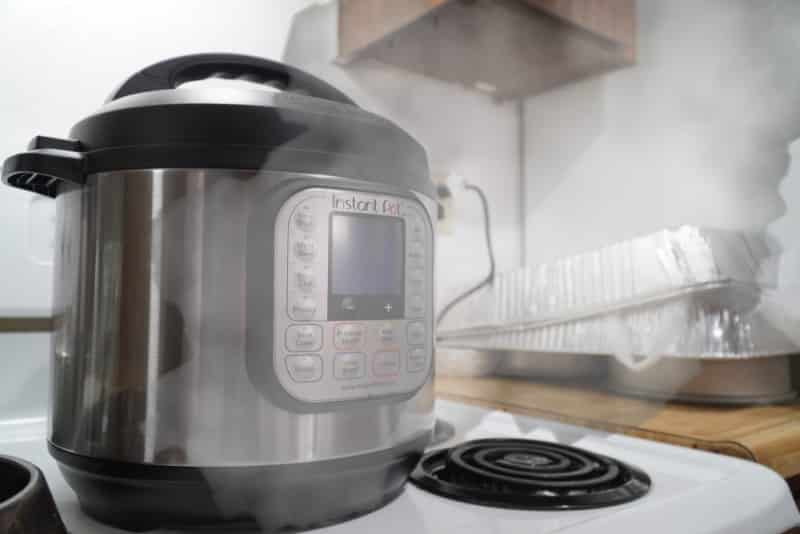
When the steam build-up reaches a certain point, some of that steam needs to come out to eliminate any dangerous high-pressure situations. That means that the pressure cooker has reached the desired pressure level, and any steam released is an excess and not something needed for the cooking process.
However, you shouldn’t think that the pressure cooker steam coming out of the safety valve signifies that your food is ready. It simply shows that the cooking process reached a point where too much steam was inside the pot. The food will only be ready once the set time has elapsed.
Usually, a pressure cooker releases steam out of its safety valve when the contents reach around 250 degrees Fahrenheit. Normally, the cooking temperature stays under 212 degrees, but we see some pressure releasing via the safety valve when it goes past that.
What can you do?

You do not need to do anything because the steam will be released gradually by the unit itself. Every pressure cooker is created with the idea of being as hands-off as possible, so once you have set the cooking time and mode, you can leave it to do its thing.
All you have to do is to double-check the valves and seal as we detailed above and ensure that they are working correctly before you start cooking. This way, the pressure cooker will use those safety valves automatically and release pressure as needed.
While that hiss might scare you at times, it’s normal and a part of the pressure-cooking process! So be safe, and we hope you enjoy using your pressure cooker.